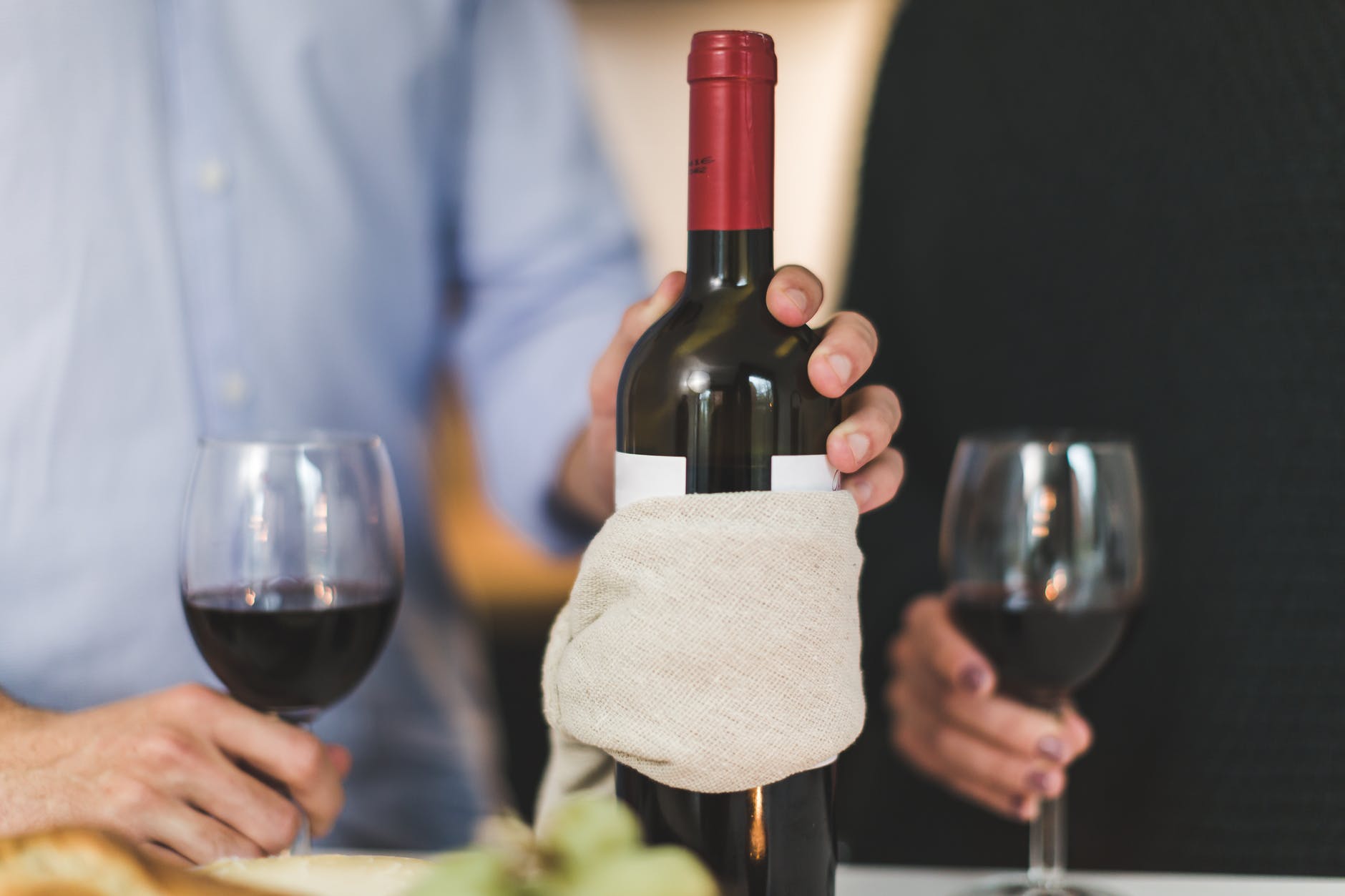The Way to Make Homemade Wine: Don't Miss These Wine Making Tips

If you like wine, you have likely had ideas of learning how to make home made wine!
A lot people recall our parents creating wine and possibly for some it was not such a fond memory, particularly when as a child you were not old enough to consume wine. Did you need to pick dandelions to your daddy's dandelion wine? If this is the case, I could empathize with you since did I. We lived in the state in which dandelions grew abundantly and freely, unlike my suburban yard now in which the sight of one dandelion becomes the local eyesore.
Hopefully, your preferences in wine, such as mine, have grown and taken on new levels of wine appreciation, choosing for the complex tastes and scents of red wine kinds including Cabernet Sauvignon, Merlot, and Zinfandel or individuals located in white wine kinds, including Chardonnay, Pinot Grigio, or Moscato - none of that requires us to select dandelions if we would like to indulge in some wine which makes our own.
Find out How to Make Homemade Wine which Tastes Great!
You're most likely wondering if the home made wine will taste some good, and it'll be helpful to understand that award winning homemade wines do exist and are rather simple to create. Homemade wine may yield exactly the identical excellent sophistication, taste, and odor of several vineyard wines.
This information offers you all the wine making supplies and directions for creating that award winning bottle of wine. The directions are simple to follow, yet to make a fantastic tasting wine takes a little bit of aging. Thus, we have to patiently await our wine to ferment properly, which may take 3-6 weeks or more. The wine will be ready to bottle after one month and may be drinkable in a different month, but more may cause a better tasting wine, especially with red wine.
I know it's going to be tough to wait, but it's going to be well worth it! It is possible to tag your wine, naming it after yourself, your puppy, a particular whimsy, or whatever else that matches your fancy.
The Way to Make Homemade Wine - Wine Making Kit
To understand how to make home made wine, I think that it's ideal to begin with a wine making kit. There are a variety of sites which sell the kits. A number of the kits are very fine as they come packed with reusable gear, quality components, and easy-to-follow wine making directions.
You can make homemade wine from scratch, with no kit, but you would still need to buy a few basic wine making materials, the fruit juice, wine yeast, sanitizers, etc.. If you acquire a wine making kit, then each the things which you will need to create wine in your home are all included.
The Way to Make Homemade Wine Simple Recipe - Let's Get Started!
For novices, it is ideal to begin with a little batch of wine. We'll use the following easy recipe to create our wine, and it may be corrected for sweetness or dryness based upon your preferences. Wine Making Ingredients
Wine Making Ingredients
1 1/2 Quarts (48 oz.) 100 percent grape juice: white, red, or blue avocado juiceat room temperature between 65 and 75 °F
1/2 package dry yeast**
2 1/2 Quarts trendy water
3 1/4 Cups sugar (to get a sweeter wine include up to 5 cups of sugar)
*Make certain the juice does not have potassium sorbate inside, it is going to avoid the fermentation process from happening correctly. We will, nevertheless, add potassium sorbate after in the procedure in order to add stability to the wine. You are able to buy focused"wine grape" juice (i.e., the juice out of Cabernet Sauvignon, Merlot, Chardonnay grapes) from wine manufacturing providers which would truly be the ideal juice to utilize. But for an initial effort at how to make homemade wine, then you might choose to stay with the suspended focus from the grocery shop.
** You can purchase wine yeast by a wine manufacturing provider, but a few winemakers use bread yeast. If you obtain wine yeast, then consult with this yeast packaging for the correct amount to use.
Wine Making Supplies
As you understand how to make home made wine, you'll also learn that lots of wine making materials are reusable, which cuts down on the price of making it. You'll require the following basic supplies and equipment, a lot of which you are able to get in a wine shop shop on the internet, together with books about the best way best to make home made wine.
Chlorinated detergent sanitizer
1 lidded Main fermentation vessel (a jar, vat, or bucket which holds over the carboy)
1 gallon carboy (a plastic or glass container used to maintain contaminated liquids( such as wine)
Siphoning tubing
1 bung and airlock (used in fermentation to Permit carbon dioxide to escape in your carboy and protects wine from external dust or other contaminants )
1 hydrometer (steps sugar, smoke and gravity in wine)
Stabilizers - 1 bundle of metabisulphite and a single bundle of potassium sorbate)
1 thermometer
Wine bottles and twist caps
The Way to Make Homemade Wine Step-by-Step
The Way to Make Homemade Wine Phase 1 - Initial Fermentation
Measures:
Sanitize primary fermentation vessel - to reduce wine contamination and spoilage, don't skip this very important measure.
Put juice, sugar, and yeast to the primary fermentation container, and combine it lightly, but nicely, using a wooden spoon or set the cover on it and shake it.
Fill the remaining part of the container with water, leaving 1/2″ in the very top.
Using a hydrometer, quantify gravity; you ought to find a reading everywhere from 1.070 into 1.080.
Place the lid onto the principal fermenter.
Put fermenter at a place that retains a fever in the assortment of 65-75 °F. Within 48 hours fermentation begins.
The Way to Make Homemade Wine Phase 2 - Second Fermentation
On the 7th day, move wine into the carboy in another way:
Measures:
Sanitize carboy and siphoning substances - to reduce wine contamination and spoilage don't skip this very important measure.
Employing the tube, siphon the wine to the sanitized carboy without bothering sediment from the principal fermentation vessel. You are going to want to maintain any sediment from the principal fermentation vessel. Upon siphoning, you'll probably see more distance (as a result of sediment left ) from the carboy, but do not top it off just yet.
Using a hydrometer, quantify gravity; you ought to find a reading of 1.010 or not.
Attach bung and air-lock into carboy (read air-lock instructions for attachment - fill halfway with water).
Leave carboy in fermentation place for 10 days.
The Way to Make Homemade Wine Phase 3 - Stabilizing
On the 17th day, re-measure the wine gravity; you ought to find a reading of 0.996 or even less. Re-check the gravity another day to confirm that the wine has a steady reading. Repeat this procedure until the wine contains two successive times of steady gravity.
Stabilization:
Check the temperature of the wine to make sure it is between 65 and 75 °F. If the temperature is below this range, the wine might be slow to stabilize and you might have elevated levels of carbon dioxide (CO2). If the reading isn't in the right selection, either fix the warmth in the fermentation region or transfer the wine into a room with the proper temperature.
If the wine isn't clear, it might be brought on by an excessive amount of CO2. To correct this, then add the stabilizers: 1 pack of metabisulphite and one bundle of potassium sorbate to one-half cup warm water and mix to dissolve. Then add the mix to the carboy, stirring vigorously to get a few minutes to disperse stabilizers and divide the CO2.
Add water to top off carboy around two to 5" of the carboy's neck.
Re-attach airlock.
Allow the wine to spell out for 2 days.
The Way to Make Homemade Wine Phase 4 - Clarification and Bottling
About the 25th day of the best way to make home made wine experience, check out wine clarity.
Bring a sample of wine into a glass and then analyze it under good light. If the liquid is not entirely clear, make it alone for 7 days. Cloudy wine will not apparent after bottling, and thus don't jar the wine till it is totally apparent.
After the wine is totally apparent, siphon it in sanitized wine bottles, then seal the bottles with a twist cap.
If you use a screw cap, then it is possible to leave the bottles standing upright; should you use a cork, then you should leave the bottles standing upright for 3 times, then lay them down in their side, then elevating themas with a wine rack, to keep the cork moist; differently the cork will dry out and atmosphere will seep in the wine and then contaminate it. Want to know more information click how to make wine at home article
